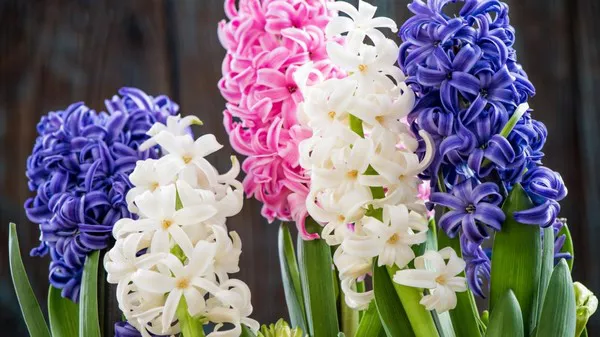Hyacinths are renowned for their captivating fragrance, vibrant colors, and elegant spikes of blooms. These spring-flowering bulbs have been cherished by garden enthusiasts for centuries, adorning gardens, landscapes, and indoor spaces with their charm. If you’re an avid gardener or simply appreciate the beauty of hyacinths, you might wonder: how many flowers can you expect from one hyacinth bulb? This article delves into the intricacies of bulb multiplication, factors affecting flower yield, and strategies to maximize the floral display of these delightful plants.
Understanding Hyacinth Bulb Multiplication
Hyacinth bulbs, like many other bulbous plants, are capable of multiplying over time through a natural process known as bulb multiplication or offset production. Each hyacinth bulb usually produces one flower stalk that stands 8 to 10″ tall. Sometimes you will also get a second or third stem with a smaller flower cluster. This natural propagation mechanism is driven by the plant’s desire to ensure its survival and perpetuate its genetic material.
Factors Affecting Flower Yield
Several factors influence the number of flowers that can be expected from one hyacinth bulb. By understanding and optimizing these variables, gardeners can enhance the flower yield and overall vitality of their hyacinth plants.
1. Bulb Size and Health
The size and health of the original bulb play a pivotal role in determining the flower yield. Larger, healthier bulbs are more likely to produce multiple offsets, each capable of developing into a new flower spike. Ensuring that bulbs are of high quality and free from diseases is essential for maximizing flower production.
2. Cultivation Conditions
The environment in which hyacinth bulbs are grown greatly affects their growth and flower yield. Factors such as sunlight, temperature, soil quality, and moisture levels contribute to the overall health of the plant and its ability to produce flowers. Optimal conditions provide the necessary resources for bulb multiplication and subsequent flower formation.
3. Bulb Maturity
Hyacinth bulbs take a few years to mature fully and reach their potential for producing offsets. Young bulbs may not have accumulated enough energy and nutrients to support extensive bulb multiplication. As bulbs mature, they allocate more resources to offset production, resulting in higher flower yields.
4. Proper Planting Depth
Planting depth plays a role in the development of offsets. Planting bulbs at the recommended depth allows them to establish themselves and encourages the formation of new bulbs around the original one. Shallow planting can limit the space available for offset development and subsequently impact flower yield.
Strategies for Maximizing Flower Yield
Gardeners eager to enjoy a bountiful display of hyacinth flowers can employ several strategies to encourage bulb multiplication and optimize flower yield.
1. Bulb Division
After a few years of growth, hyacinth clumps can become crowded with offsets, potentially leading to reduced flower production. Gardeners can carefully dig up the clump, separate the offsets, and replant them at the appropriate spacing. This practice prevents overcrowding and provides each bulb with sufficient space to develop into a healthy plant with multiple flower spikes.
2. Proper Planting Practices
Planting hyacinth bulbs at the recommended depth and spacing allows for optimal root development and offset formation. Adequate spacing between bulbs prevents competition for nutrients and sunlight, promoting the healthy growth of offsets and subsequent flowers.
3. Fertilization
Applying a balanced fertilizer during the growing season can provide the additional nutrients needed for bulb multiplication and flower formation. However, it’s crucial not to over-fertilize, as excessive nutrients can lead to lush foliage at the expense of flower production.
4. Environmental Care
Maintaining consistent and appropriate environmental conditions is essential for encouraging bulb multiplication and flower yield. Providing the right amount of sunlight, ensuring proper drainage, and avoiding waterlogged soil all contribute to the overall health of hyacinth bulbs.
Conclusion
The allure of hyacinths lies not only in their breathtaking blooms but also in their ability to multiply and create spectacular displays. Each flower spike tells a story of nature’s intricate processes and the gardener’s dedication to nurturing these bulbs. Whether you’re cultivating hyacinths in a garden bed, a container, or an indoor space, the anticipation of seeing multiple flower spikes emerge from a single bulb adds to the excitement and joy of the gardening journey. By employing proper care, thoughtful cultivation techniques, and an understanding of bulb multiplication, you can create a symphony of colors and fragrances that celebrate the splendor of hyacinths.


